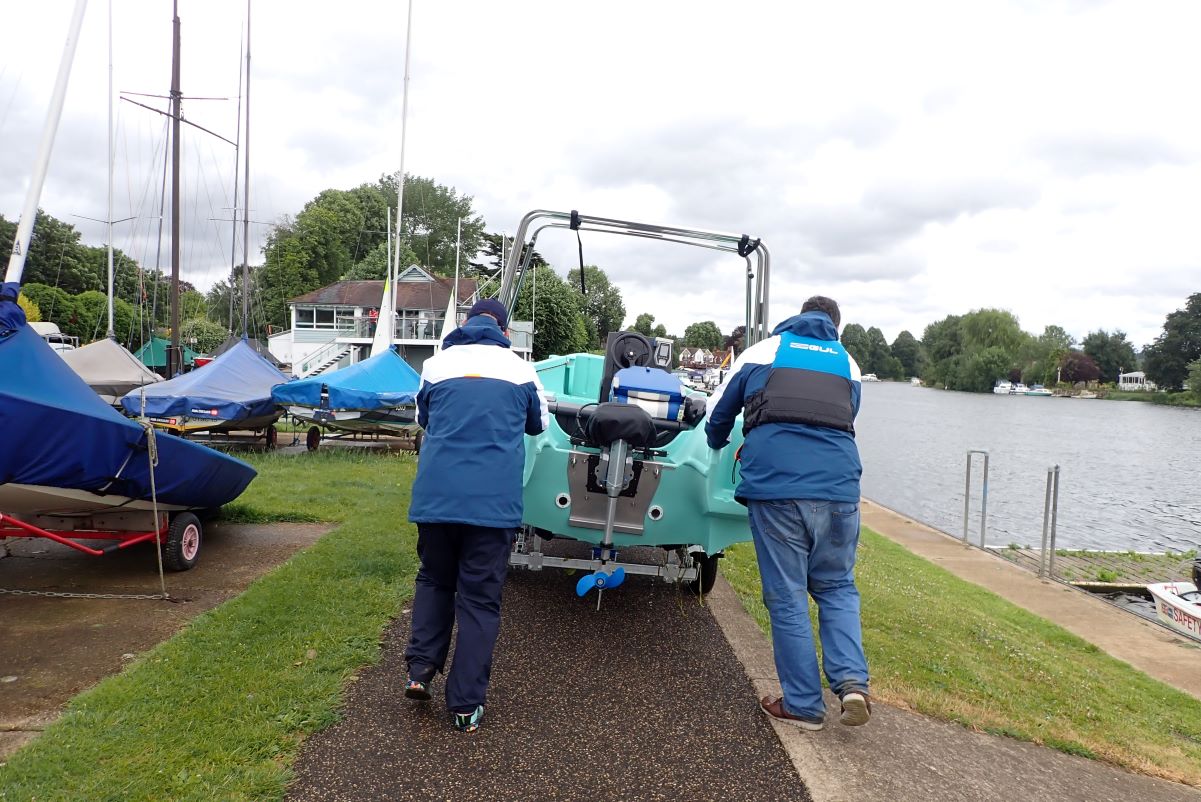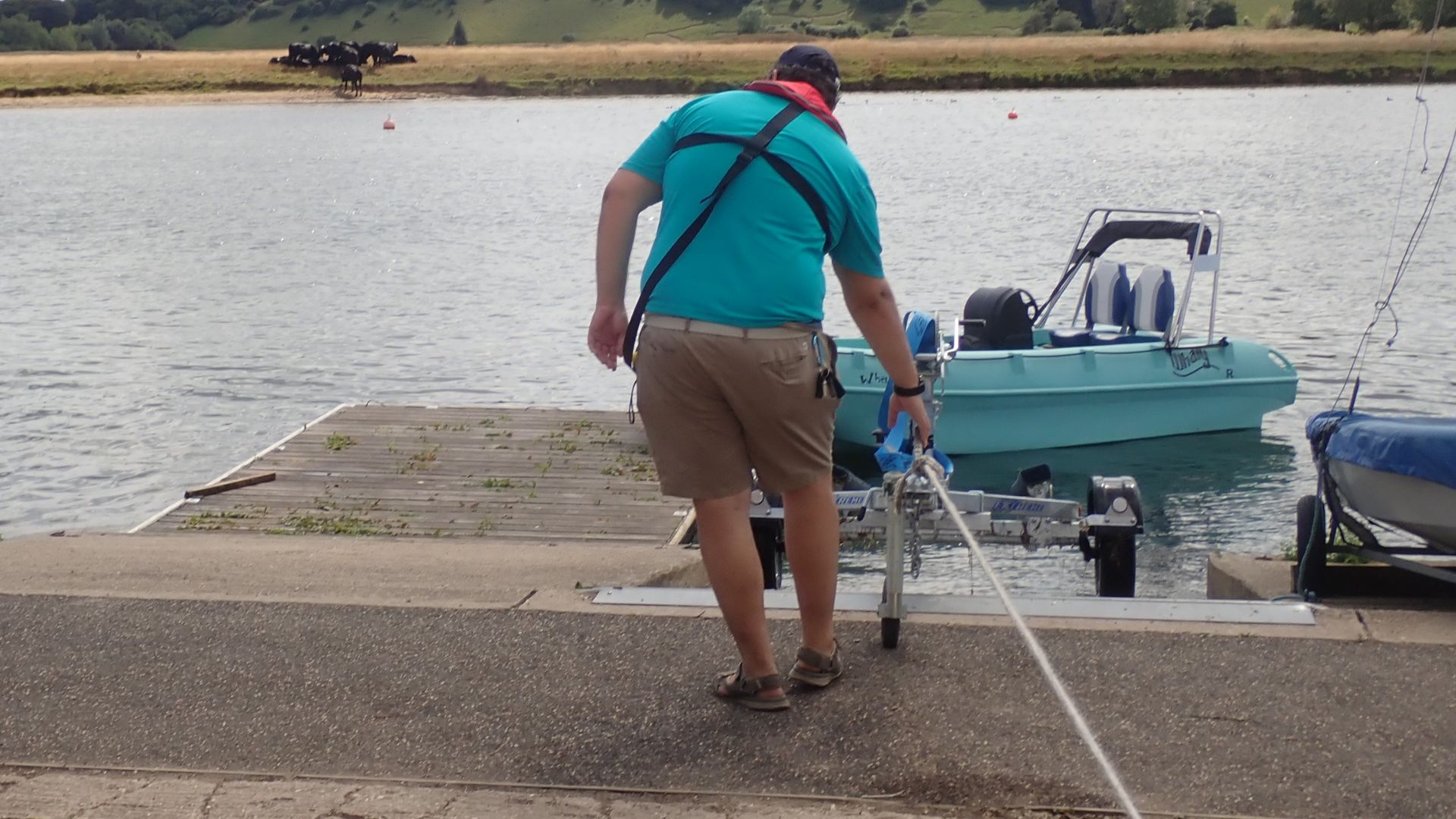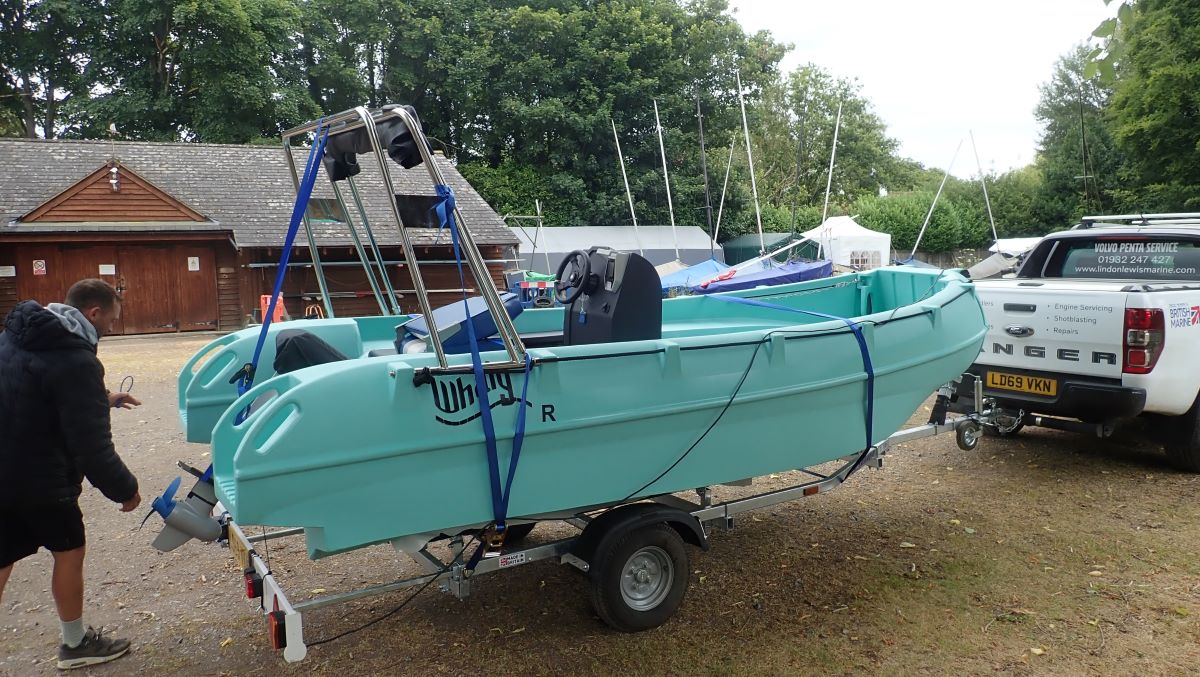Launching and recovering a powerboat might seem like a simple enough task, but as anyone who has experienced the joys (and occasional mishaps) of boating will tell you, it requires proper planning and a healthy respect for the elements—especially when the slipway is as slippery as a bar of soap!
In this episode, we’ll dive into the steps and precautions necessary to launch and recover a powerboat, ensuring both your boat and your dignity stay intact.
Before you even think about driving down to the slipway, a little preparation goes a long way.
Here’s what you need to do:
Inspect your equipment:
Check your trailer hitch and safety chains to ensure they’re secure. Look over your winch, straps, and ropes for signs of wear.
Perform a pre-launch boat check:
This includes verifying that the drain plugs are securely in place and any essential equipment, like life jackets and emergency gear, is onboard. Check the fuel and the battery and any lights on the boat.
Assess the slipway:
The most critical step in preparation is to inspect the slipway itself. At the Upper Thames Sailing Club, we’re fortunate to have an electric winch and the boats are moved by hand into place. However, other locations may require you to drive your towing vehicle down to the water’s edge.
Look for algae, mud, or wet spots that could be especially slippery. Sometimes it is necessary to clear the slipway of any items in or near the water.
Launching a powerboat from a trailer isn’t just about brute force—technique, patience, and safety are key.
It’s important to remember that many people walk along the edges of rivers and slipways, especially in scenic areas. Ensuring their safety should be a priority during launching. In some locations, bollards or safety ropes are used to mark off the launch area and warn passersby of potential danger. Always check if there are designated safety measures in place, and if not, be extra vigilant.
I’ve found that launching a boat often draws the attention of curious onlookers, especially children who may have never seen a boat being launched before. They’ll sometimes gather quite close, which can be both charming and distracting. Always keep a watchful eye to make sure they stay at a safe distance, and if necessary, ask a fellow boater or crew member to gently direct them away from the launch zone.
With that in mind, here’s the step-by-step process:
Position the Trailer:
Back your trailer down the slipway, keeping the wheels straight. If you’re using a vehicle, go slowly and don’t let the trailer wheels go too far into the water. If your location has an electric winch like ours, position the trailer so that with one person on the winch the other can easily and gently guide the boat down the slipway.
Engage the Winch:
Gently lower the boat into the water using the electric winch controls. It’s a smooth and controlled way to manage heavier boats, allowing them to enter the water without the dramatic splash of other methods.
Prepare for Launch:
If using a manual method, engage the trailer’s winch and slowly lower the boat into the water. If your slipway is especially slippery, having a second person nearby to provide guidance or assistance is a good idea.
Start the Engine (in the water!):
Once the boat is floating but still tethered to the trailer, start the engine while it’s in neutral. Many outboard motors require being lowered into the water, either with a hydraulic or manual system. Confirm that water is being properly expelled from the outboard engine’s cooling system. At some slipways there is a jetty or pontoon to tie the boat up to and the boat can be moved here before starting the engine.
Just when you think it’s all over, you’ve got to get the boat back out of the water and onto dry land. Here’s the process for safe and smooth recovery:
Reposition the Trailer:
Gently back the trailer into the water until the winch is accessible. If using an electric lift, align the trailer with the lift platform.
Attach the Boat to the Winch:
Use the winch rope on the trailer or cable to attach the boat securely to the trailer. Engage the winch to start pulling the boat onto the trailer, ensuring it remains aligned with the trailer guides. If the boat is not balanced properly reverse the winch until the boat floats, reposition the boat and try again.
Secure the Boat:
Once the boat is fully on the trailer, fasten it with safety straps. Ensure that no movement is possible before driving off the slipway to complete the tying down process. Slipping here can cause damage or, worse, launch an impromptu comedy show for everyone onshore.
With the boat back on the trailer, you’re almost ready to pack up and leave, but a few final checks are essential:
Drain and Clean:
Open any drain plugs and allow water to escape. Wipe down the boat to remove any dirt or mud collected during the launch.
Re-secure Equipment:
Ensure all safety gear, ropes, and loose items are stowed securely for transport.
Safety First:
Check the trailer connections and lights one last time. Slippery slipways are notorious for surprising even experienced boaters, so if you’re heading out from a particularly greasy one, take it slow and be prepared to lend a hand to fellow boaters.
Slipways can be the Achilles’ heel of an otherwise smooth operation. During one memorable launch, even the instructor, who had done this hundreds of times, took a graceful tumble. Fortunately, she popped back up as if nothing happened—after all, nothing bruises a sailor’s pride quite like an audience.
Launching and recovering a powerboat is all about being prepared, staying cautious, and paying attention to the details. By planning ahead, inspecting your equipment, and keeping an eye on the conditions, you’ll be well on your way to mastering this crucial skill. And remember, the electric winch is your friend, especially if you’re not keen on re-enacting a Bambi-on-ice routine at the slipway!


